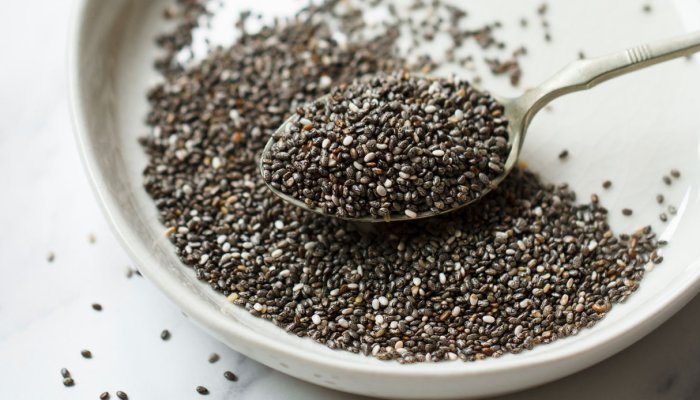

With origins in Mexico and northern Guatemala, the chia plant is also grown in Australia, Bolivia, Columbia, Peru, and Argentina, among other countries. It was traditionally used for medicinal purposes and food in Aztec and Mayan societies, but today, the plant is primarily grown for its edible seeds1.
Just 2 millimeters long, chia seeds vary in color: You’ll find black, gray, white, and black-spotted varieties (which run $7 to $9 per 12 ounces), but their nutritional profiles are nearly identical1. The mild-flavored seeds are most well known for their highly absorbent nature, says Whitney Crouch, RDN, CLT, an integrative dietitian and LEAP therapist.
“The seeds are hard until they’re moistened, and I often see them used in dishes where they’re able to absorb some liquid,” she explains. “When they absorb liquid, they become gelatinous on the outside and, depending on how much liquid they have, they might still have a little bit of crunch on the inside.”








